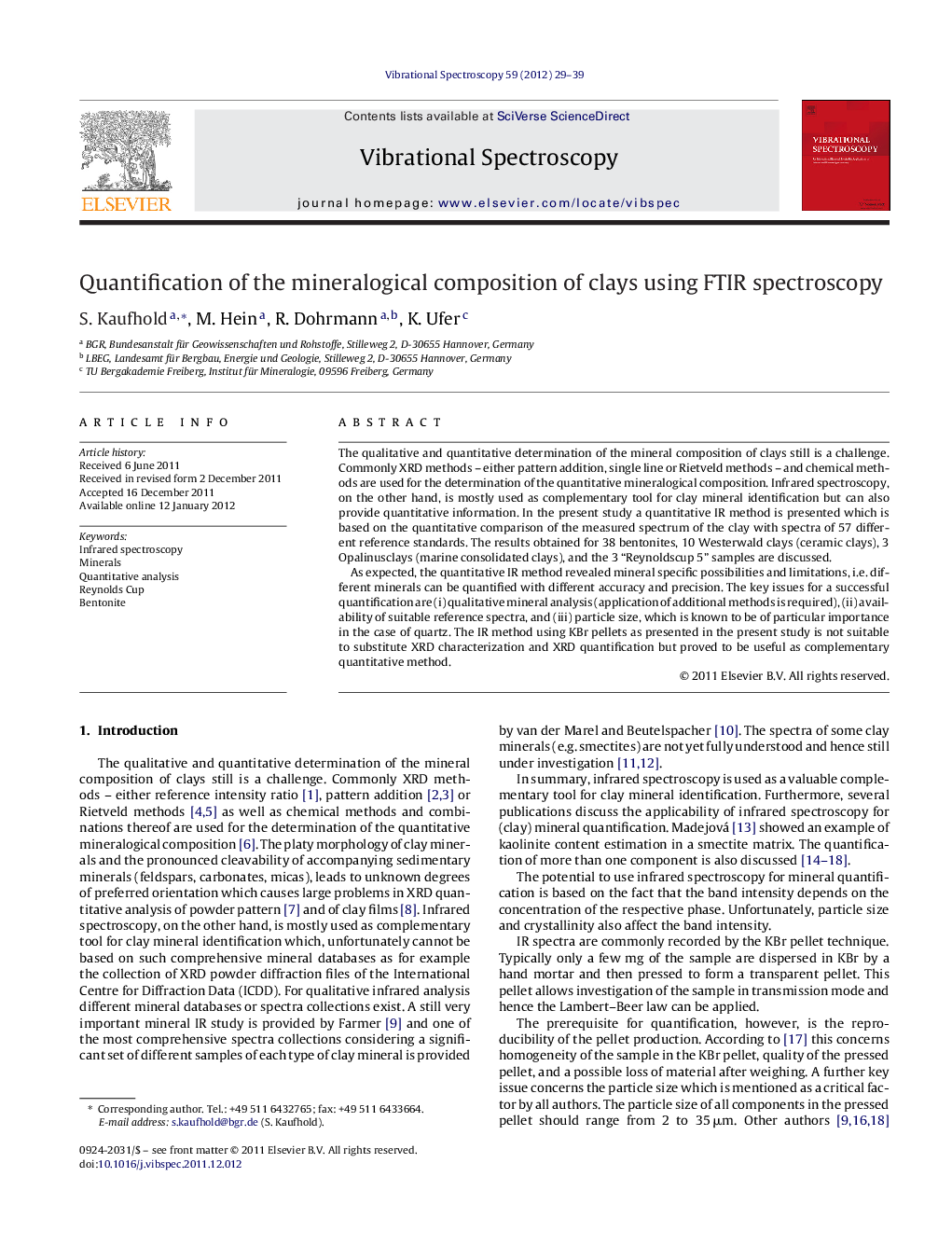| Article ID | Journal | Published Year | Pages | File Type |
|---|---|---|---|---|
| 1251939 | Vibrational Spectroscopy | 2012 | 11 Pages |
The qualitative and quantitative determination of the mineral composition of clays still is a challenge. Commonly XRD methods – either pattern addition, single line or Rietveld methods – and chemical methods are used for the determination of the quantitative mineralogical composition. Infrared spectroscopy, on the other hand, is mostly used as complementary tool for clay mineral identification but can also provide quantitative information. In the present study a quantitative IR method is presented which is based on the quantitative comparison of the measured spectrum of the clay with spectra of 57 different reference standards. The results obtained for 38 bentonites, 10 Westerwald clays (ceramic clays), 3 Opalinusclays (marine consolidated clays), and the 3 “Reynoldscup 5” samples are discussed.As expected, the quantitative IR method revealed mineral specific possibilities and limitations, i.e. different minerals can be quantified with different accuracy and precision. The key issues for a successful quantification are (i) qualitative mineral analysis (application of additional methods is required), (ii) availability of suitable reference spectra, and (iii) particle size, which is known to be of particular importance in the case of quartz. The IR method using KBr pellets as presented in the present study is not suitable to substitute XRD characterization and XRD quantification but proved to be useful as complementary quantitative method.
Graphical abstractA new method for the quantification of mineral mixtures (rocks) based on IR spectroscopy was established which is based on manual pattern addition. The graph shows the measured and modeled spectrum of the second Reynoldscup 5 sample.Figure optionsDownload full-size imageDownload as PowerPoint slide
